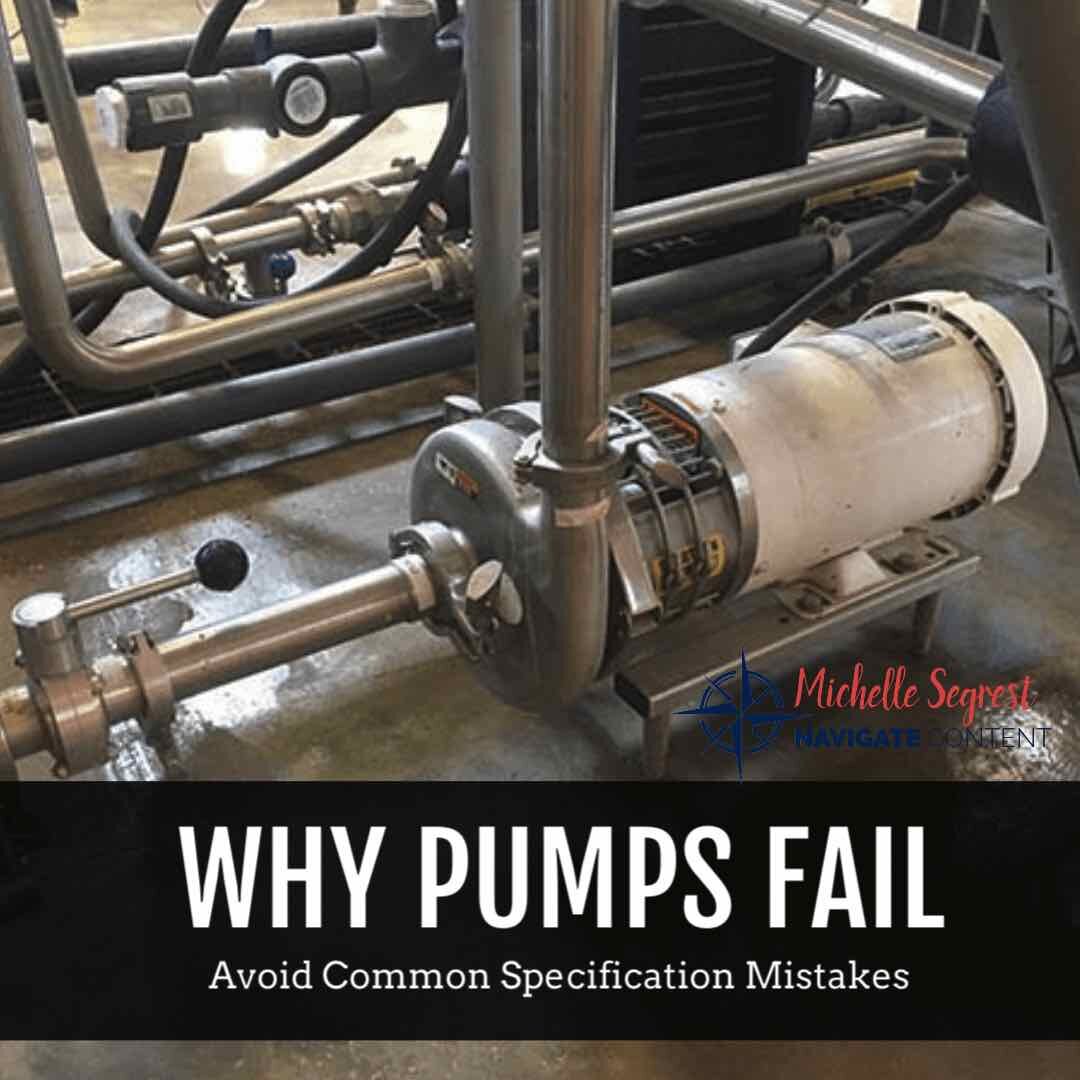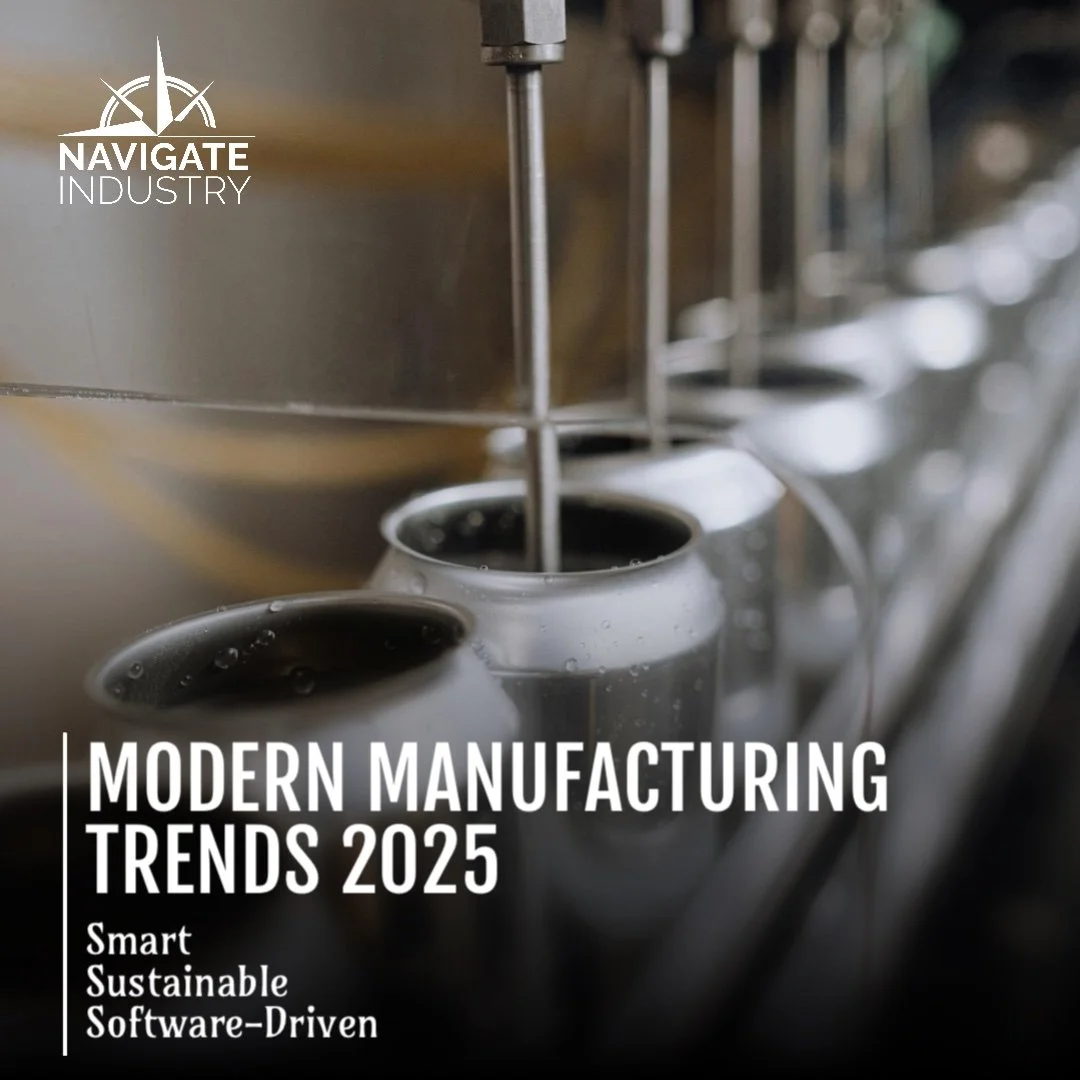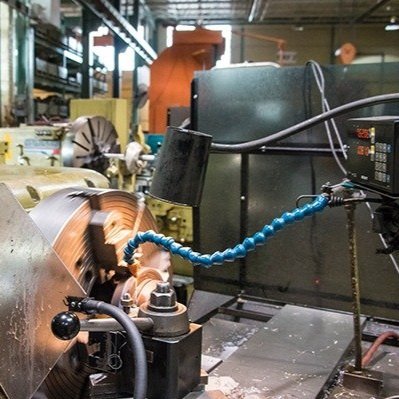Top 6 Modern Manufacturing Trends in 2025: Smart, Sustainable, and Software-Driven
/Explore the top manufacturing trends for 2025—smart factories, AI, sustainability, cybersecurity, and reshoring. Stay competitive in modern manufacturing.
By Michelle Segrest, Reporting on the Industry
Manufacturing has always been at the center of innovation, but 2025 marks a pivotal shift. From AI-powered automation to sustainable practices and resilient supply chains, today’s manufacturers face a new landscape defined by technology and agility.
The companies that embrace modern manufacturing trends now will be the ones best positioned for competitiveness and growth in the coming decade. Here are the Top 6 modern manufacturing trends for 2025.
1. Smart Factories & Industry 4.0
The fourth industrial revolution is here, where data, connectivity, and automation are reshaping how factories operate.
IIoT and Predictive Maintenance
The Industrial Internet of Things (IIoT) has become the backbone of the smart factory. With connected sensors gathering real-time data, manufacturers can detect potential failures before they happen. Predictive maintenance not only reduces downtime but also extends equipment life, delivering measurable cost savings.
Advanced Robotics & Collaborative Robots (Cobots)
Robotics is no longer confined to repetitive assembly line work. Collaborative robots—better known as cobots—now work alongside human operators, handling dangerous or repetitive tasks while enabling greater flexibility in production. This human-machine collaboration makes it possible to scale operations quickly and efficiently.
AI-Driven Quality Control
Artificial intelligence is transforming quality assurance. Machine vision and AI analytics can identify defects earlier than the human eye, reducing waste and improving consistency. For manufacturers, this means fewer recalls, lower costs, and stronger customer trust.
2. Software-Driven Manufacturing & Digital Twins
Manufacturing is shifting from hardware-first to software-led processes, with digital twins and cloud collaboration leading the charge.
Connected Products and Digital Portals
Modern manufacturing is becoming increasingly software-centric. By integrating connected products with digital service portals, companies can monitor product performance in the field, predict maintenance needs, and build stronger customer relationships. This shift from selling “products” to selling “solutions” is reshaping business models.
Cloud-Based Design & Manufacturing
Cloud platforms now support design, testing, and production processes across global teams. Engineers can collaborate in real time, using shared digital twins that mirror physical products. This approach accelerates innovation, shortens time to market, and improves design accuracy.
3. Sustainability & Resilient Supply Chains
As climate and global disruption pressures mount, manufacturers are embracing sustainability while rethinking fragile supply chains.
ESG and Carbon Reduction
Sustainability has moved from buzzword to baseline. Manufacturers are embedding carbon-neutral practices, adopting renewable energy sources, and exploring carbon capture technologies. These changes aren’t just about compliance—they’re about winning customer loyalty in a world that values environmental stewardship.
Supply Chain Digitization & Reshoring
The disruptions of recent years have pushed manufacturers to rethink global supply chains. Digital tracking, blockchain, and AI tools now give companies real-time visibility from supplier to customer. At the same time, reshoring and nearshoring efforts are helping companies reduce risk while strengthening regional resilience.
4. Agile Manufacturing & Workforce Transformation
Adaptability is now the rule of survival, pushing manufacturers toward agile methods and retraining workforces for the digital era.
Agile (and “Lean-Agile”) Approaches
Flexibility is now a competitive advantage. By adopting agile and lean-agile methods, manufacturers can respond quickly to shifting customer demands and market disruptions. Small batch runs, modular production, and rapid prototyping are becoming the norm.
Workforce Development & Robotics Retraining
With advanced robotics and automation on the rise, workforce transformation is critical. Companies are investing in retraining programs that prepare employees for high-tech roles, from programming robots to managing digital supply chains. This dual investment in people and machines ensures long-term adaptability.
5. Cybersecurity: A Critical Enabler
With connected systems come rising threats, making cybersecurity a vital safeguard for modern manufacturing operations.
As factories become more connected, they also become more vulnerable. Cyberattacks targeting industrial control systems are on the rise, and a single breach can disrupt entire production lines. Modern manufacturers are prioritizing cybersecurity as a strategic investment, building digital defenses alongside physical infrastructure.
6. Emerging Frontiers: Dark Factories & Mass Personalization
Automation and customization are converging, opening a future where fully automated “dark factories” meet the demand for tailored products.
Fully Automated “Dark Factories”
The concept of dark factories—plants that operate without human workers—has moved from theory to reality. These AI-driven facilities run 24/7, boosting efficiency and consistency. While they raise questions about employment, they also represent a new frontier in automation.
From Mass Production to Mass Personalization
Another trend reshaping manufacturing is the shift toward mass personalization. Advances in digital design, modular platforms, and additive manufacturing allow companies to deliver customized products at scale. Consumers get what they want, and manufacturers benefit from higher margins and stronger brand loyalty.
Conclusion: A Defining Year for Manufacturing
The year 2025 represents a turning point for modern manufacturing. Smart factories, digital twins, sustainable operations, agile approaches, and cybersecure systems are no longer optional—they are essential.
Emerging models like dark factories and mass personalization hint at a future where efficiency and customization go hand in hand.
For manufacturers, the path forward is clear: embrace technology, invest in people, and commit to sustainability. Those who adapt quickly will not only survive but thrive in the next era of industrial innovation.






















